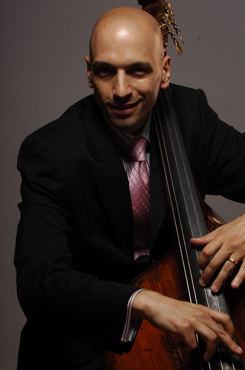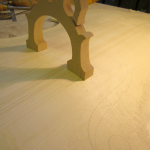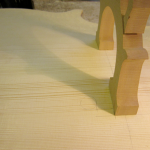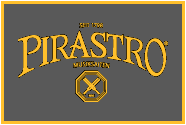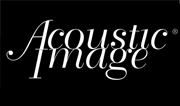Your Luthier and You. How’s the Happy Couple?
Just how important is the relationship between bassist and luthier?
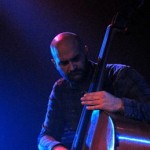 A friend of mine from England had a great idea for a research paper. He thought it would be interesting to interview a few luthiers and bass players to get their idea of what they thought about the relationship between a luthier and a bassist.
A friend of mine from England had a great idea for a research paper. He thought it would be interesting to interview a few luthiers and bass players to get their idea of what they thought about the relationship between a luthier and a bassist.
The interviewer is a nice bassist from London England named Greg Cordez (picture on the right), who interviewed Barrie Kolstein (USA), Martin Penning (UK), and myself (da Bronx).
When Greg told me about the idea, I thought it was an amazing thing to research. Just last year in Argentina I spent a good 20 minutes of a master class telling everyone that they need to learn what to ask for from their luthiers, but it never occurred to me to actually write out my thoughts. I’d like to give a HUGE thank you to Greg for actually following though with this and letting me publish an excerpt of it here on my blog. I hope he keeps the ball rolling, since this is such an important topic that often gets overlooked by bassists.
Barrie Kolstien
[Greg Cordez] Hi Barrie, thanks again for doing this. This project is focusing on the relationship between bassists and luthiers. A great example is your father Samuel, yourself and Scott Lafaro. I’ve got a few questions below for you, but please feel free to add any/all other thoughts you have on any of this.
[Greg Cordez] In your own words, could you talk through the relationship both you and your father have with the LaFaro family?
[Barrie Kolstein] Sam Kolstein, my father, was introduced to Scott LaFaro in the late 1950s when the famed George Duvivier who was working on a Gunter Schuller project with Scott, brought Scotty out to the shop, then located in his home in Merrick New York.
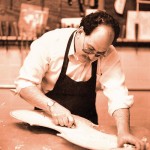 Scotty had acquired his Prescott from the Stein on the Vine Bass shop in Hollywood California. The bass was originally found by the late Red Mitchell, who was a close friend of Scotty. Red knew Scotty was looking for such a bass and secured the bass for Scotty to fly out to try. Scotty loved every aspect about the bass, but how the bass sounded.
Scotty had acquired his Prescott from the Stein on the Vine Bass shop in Hollywood California. The bass was originally found by the late Red Mitchell, who was a close friend of Scotty. Red knew Scotty was looking for such a bass and secured the bass for Scotty to fly out to try. Scotty loved every aspect about the bass, but how the bass sounded.
Back in New York working with George Duvivier, it was highly suggested that Scotty come out with George with his Prescott to meet Sam
From the moment that Scotty met Sam, there was an immediate love based upon the immense talent and personal being that my father saw in Scotty.
My father accomplished the restoration on the Prescott and gave back to Scott a bass that literally set the standards for what a great bass should sound like.
I was quite young at the time… only 9 or 10 years old when Scotty came to the house and the shop, but I do remember at this young age his presence in the shop and sharing the dinner table in the house with him on a few occasions.
As much as I do not wish myself to be any older than I presently am… I do regret that I was not a few years older and a bass player, which I began at the age of 12 to really appreciate having Scotty in my home.
When I hear those recordings of Scott Lafaro, it’s immediate just what a remarkable approach to the instrument he had. It is hard to imagine the ‘traditional’ setup of gut strings/high action would have allowed or even encouraged that style of playing. Could you please explain the significance of your fathers work on the Prescott bass and how it may have inspired LaFaro on to greater heights?
When Sam was given the challenge to take the Prescott in it’s present condition and enhance the tonal qualities to what we all have come to know of this bass today…he had a task ahead of him. Sam and I talked often of what he did to the bass and his process. He told me that the first thing he felt compelled to do was to understand what Scotty was bringing to the musical world.
Understand that back in the 1950s Scott LaFaro style and approach of playing the bass was not only unheard of, but also not even conceived of back then. That is the genius of Scott LaFaro…he was a musical innovator for the Double Bass. My father realized that the Prescott needed to offer great depth, lushness of sound, but a point and definition with great projection…not asking for too much!
Sam approached the restoration with all his expertise and accomplished a masterful restoration on the LaFaro Prescott that not only concerned itself in protecting the structural integrity of the bass, but also greatly enhanced the tonal qualities of the bass to what is synonymous with the famed LaFaro sound. Relational tuning of the top and back tables of the bass, new bass bar, new crossbar, installation of a neck block and resetting of the neck to proper pitch and elevation and full varnish restoration…then a setup that was closed worked out between Sam and Scotty, setting the bass up will gut strings at a very low action, unheard of with use of Gut type strings. This all added up to the fine final restored Bass that Scotty so relied upon.
For all of Lafaro’s facility on the bass, the setup Samuel Kolstein gave the instrument certainly must have played a huge part in his development. As Lafaro is a huge influence on modern bass playing, I personally feel that Samuel Kolstein deserves a certain amount of credit for this. How do you feel about this assumption?
Scotty as we all know was not a schooled bass player…. he was a natural on the instrument. He played bass the way we breathe. However, the Kolstein philosophy prevailed, that I still and always will subscribe to, that it is essential to make the bass play as easily as possible. Thus the player can expend his creative energies not fighting a setup on a bass, but rather channel these energies in creativity.
This is exactly what Scott and Sam worked together to create…. a setup on the Prescott that offered an extremely low and comfortable action, but a regulated and dressed fingerboard that was so accurate that it could support this low action with Gut strings.
I certainly feel that Sam was an integral part of maximizing the playing facility and tonal qualities of the LaFaro Prescott, but I also believe that any great instrument is only as good as the person behind in. The Prescott certainly had the right person behind it and truth be it, in recent years, with both Marc Johnson and Phil Palombi recording with this bass, the legacy continues.
You were in the unique position of not only restoring a legendary instrument, but also carrying on the work from your father. When you started work on the restoration of his instrument, what were some of the thoughts running through your head during this time?
My first thought after having a long conversation with Sam about bringing the bass back to life in 1988 after sitting in the shop in destroyed condition since Scotty’s untimely death in 1961 was a feeling of having a great responsibility put on my shoulders.
Understand that shortly after the death of Scotty, my Dad asked Mrs. LaFaro, Scotty’s mother, for the privilege of taking ownership of this bass. Mrs. LaFaro, more than agreed that the bass could be bought by Sam, based upon his love and admiration for Scotty and the promise that one day this bass would be made playable.
Truth is that Sam never had the heart to restore the bass. Scotty’s death was truly like losing a son and because of this he let the bass sit in it’s damage condition for well over 25 years
With the International Society of Bassists having it’s convention slated for California in 1988 and dedicated to two people very close to the Kolstein family, Fredrick Zimmermann and Scott LaFaro, I approached my father in 1986 to ask his permission to restore the bass in time to bring it out to this ISB convention.
He gave me his blessing and this restoration became an all-consuming task for the next two years. It was a challenge, an obligation, but more so a labor of love for me. Although I do not have strong memories of Scotty, his recordings and music influenced me like so many bassists in the past , present and future.
You very kindly give your time talking about Lafaro, most notably in the book ‘Jade Visions’ where you explain in detail the restoration process. You also keep the Prescott in your shop and have modeled your Travel bass on it. Both Marc Johnson and Phil Palombi have recorded with it. Do you feel a sense of duty to keep the Lafaro legacy alive?
Without a question, I feel an obligation to keep Scotty’s legacy alive by allowing all who wish to see and play Scotty’s bass, to do so at any time. Scotty, in my opinion, may have been one of the most influential and timeless players that brought the bass and a style of playing, virtually unheard, to another level that still continues to grow.
Barrie, you have played and studied the double bass to a high level yourself. Do you think this affects how you choose to build and setup your instruments and your understanding of your customers needs?
As a young person, I switched from violin to Bass at the age of 12 . I was fortunate enough to study for almost a year and a half with Mr. Frederick Zimmermann, assistant principal bassist of the New York Philharmonic, who was actually my father’s teacher at Juilliard and was most instrumental in encouraging my father to pursue his talents in the luthier field.
With Mr. Z’s untimely passing in 1967, I went off to college and upon graduating and deciding that I truly wanted to join my father and apprentice with him on a formal basis, I also decided to go back to my bass studies to become a more proficient Double bassist. Equally important in my studies was also to enhance my understanding of the instrument from a maker’s viewpoint. At this time I spent the next two and one half years with Ms. Orin O’Brien, an equally amazing player and teacher.
Orin guided me into a professional level that allowed me to perform for the next 10 years. In this period of time with Orin and even after my studies concluded with her, I was given the opportunity to take lesson and coaching with such great bassists including Georges Andre (principal bassist of the Metropolitan Opera Orchestra), Robert Gladstone ( principal bassist of the Detroit Symphony Orchestra), Samuel Hollingsworth ( principal bassist of the Pittsburgh Symphony Orchestra), and Jazz pedagogy Dave Holland.
I consider myself so fortunate to have had access to these amazing teachers, friends and mentors. The result of these studies was that I became so aware of the playing difficulties that face all bassist and still give the utmost consideration and attention to detail of making a new bass, or accomplishing a restoration that will maximize the tonal qualities of the bass, but also afford the player the greatest ease to play their instrument. I find this essential for any fine luthier.
As this project is about the relationship shared between musician and luthier, could you please explain a little about the symbiosis between the two? And perhaps how you feel when you see a master playing on your instruments?
My profession is truly a symbiotic relationship. I say this as the talents and success I have can only born true when an instrument that I make or restore is played on and creates wonderful music.
Without the player, my success on any instruments has little meaning. I think that all colleagues in my profession would also like to feel that we are integral in the success of a performance that one’s instrument is utilized.
It is a wonderful relationship for me and is why I feel that my clients are not clients but family to me…how lucky can you get?
Martin Penning
[Greg Cordez] First of all could you please define what a “luthier” is and does?
[Martin Penning] The word luthier comes from the term for a lute maker. More commonly now it covers makers of the guitar family, the Viola Da Gamba family and the violin family.
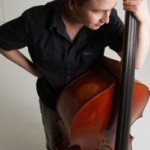 Interestingly the double bass (contrabass, upright bass, bass violin or bass fiddle) has origins, which cross over both the viola da gamba and the violin families.
Interestingly the double bass (contrabass, upright bass, bass violin or bass fiddle) has origins, which cross over both the viola da gamba and the violin families.
I believe the role of the luthier is to advise and provide the player with a bespoke service centred on the musician’s requirements.
The theme of my project is the relationship between luthier and bassist. In your own words, could you talk a little about the relationship from your perspective?
The highlight of my work is making instruments on commission. I find it a lot more rewarding than making speculatively as you’re not guessing on anything or taking an average to make something which will appeal to many musicians. You’re going all out to make a dream instrument for the client. It’s a pleasure and a privilege to be working this way and I like players to get involved in the whole process: From finding a suitable model, choosing timber to varnish and set-up requirements.
Did you play bass first and then develop an interest in becoming a luthier or vice versa? You play the bass yourself; this seems a common trait amongst the luthiers I’ve met.
My first instrument is the guitar, and my initial interest in making instruments was in guitar making. I studied this for 2 years and then became smitten with instruments of the violin family. I loved the sculptural shapes and the way you could do so much to change the sound. I worked on double basses for a year at Caswell’s while I studied at Newark School of Violin Making. I could play some pizz bass but I didn’t have proper technique. I loved the bass but was put off from taking lessons as I couldn’t read music. I started getting more and more involved with working on double basses so I bit the bullet and started having classical lessons with David Heyes. I haven’t looked back and have been gradually going through the grades. He has been a huge inspiration and I wish I’d done it years ago.
Do you think your knowledge of how to play the bass helps empathise with the needs of the working bassist?
Absolutely, I have all kinds of clients from orchestral players to rockabillies. My own taste covers the whole spectrum. I love the versatility of the bass. I’m not an advanced player but I can play different styles and this helps enormously with tailoring the sound and set-up to a players requirements.
The setup of an instrument is a highly personal one. Could you please talk me through your thoughts on the optimum setup of a bass and what you look for in an instrument?
The setup should suit the clients playing style and be appropriate to the instrument.
For example, the five stringer model I made for Ben Groenevelt was made as an orchestral instrument, primarily used while sat on a stool. A large English model bass like this will need an elevation with adequate bow clearance around the C bouts. Also I had to bear in mind that he’s a German bow player so a little tilt on the fingerboard can be helpful. For a 5 string you need a tighter radius on the bridge for string clearance.
Your requirements are different, as a Jazz player you’ll be primarily standing up playing pizz. With your setup I will have very slightly less distance on the bridge between the string grooves. Have less ‘dish’ in the fingerboard, medium string heights and so on.
Setup
Bassbar
I believe that setup begins on the inside of the instrument. The bassbar should be positioned with the bridge in mind. The distance between the edge of the bridgefoot and the bassbar is usually mirrored on the treble side with the soundpost positioning.
Sound post
I’ve seen too many basses where the post is either too tight, choking up the sound or too loose and lacks focus and needs replacing. A lot of this is a feel thing with soundpost tightness. I generally move the post back from the bridge to open the sound up or bring it closer to get the sound more focussed. A soundpost with good tight grain and a generous diameter for more contact will give the best results.
Bridge
Working on old instruments gives you a good gage as to what stands the test of time and what will need replacing. I can see that having a thin bridge would help liven up an instrument but when they’re too thin they warp very easily. I go for the best bridge blanks I can get my hands on and put a fair amount of belly in the front, I free up the bridge by opening out the eyes quite a bit.
Saddle
There has been a trend for huge oversized saddles with heights as much as 50 mm. The idea behind this is to take the tension off the front and free up the sound. Often with old basses you see the opposite, a saddle which barely rises from the front edge. I’m making my saddles at a medium height; enough to ease the tailwire around sympathetically towards the tailpiece. I have spoken with other luthiers about high saddles and they seem to be on the way out. Stephan Krattenmacher is on a mission to change any high saddles that come through his workshop back to something more modest.
Tailpiece
Altering the tailwire so the afterlength of the string beyond the bridge resonates in harmony with the string never quite works for all strings but is beneficial and worth doing. Having the string afterlength at 1/3 of the string length from the bridge to the tailpiece nut will give an interval of a forth work in sympathy with the strings.
Nut
I like to see a nicely shaped nut with a smooth curve and smooth string grooves which are only just deep enough to hold the strings but still allow then to speak. It is important to keep the strings low here with only the thickness of a business card between the string and the fingerboard.
Neck Step (distance from the front edge to the fingerboard)
Neck steps on basses have been getting bigger. Commonly now they range between 35 to 40 mm. I believe this is a better way of taking tension from the front than having an oversized saddle. It also has the benefit of easing up playing from 4th position onwards as it helps puts your reach over the bass.
Fingerboards
I’m not keen on Rhombergs (the flat E side of a fingerboard). I prefer a continuous curve. I generally use 2 different radius curves for a fingerboard – I like a lot more curve at the nut end , if you used the same curve for the bridge end of the fingerboard at the nut end it would be very flat. The amount of dish depends on the strings used. The bigger the diameter the more clearance they will need to vibrate. Lower tension strings also need more clearance or dish. A well finished fingerboard is a thing of beauty! You should be able to look down it and not see any bumps. I like the fingerboard to be blended right into the neck. I don’t like to see a ridge there. I like to see a small bevel running at 45 degrees from the top surface and the sides which looks crisp but is smooth to the touch. I like the bass side of the fingerboard beyond the neck to be nicely rounded off – no sharp edges for pizz playing. I go for thick boards 11 to 13 mm at the sides. This will have less chance of unwanted flexing past the neck and will last longer.
Neck
I like quite a small neck shape both in width and thickness for comfort and to facilitate speed and complex playing. I go for a gentle curve in cross section making the fingerboard an extension of this curve. I want the D position on the G string to be very definite so I put a tight radius from here into the neck heel.
I find a lightly oiled neck a nice finish to the maple.
Could you explain a little about how you feel when you see and hear one of your instruments in the musician’s hands?
It’s a fantastic feeling seeing one of my instruments being played. The making is such a labour intensive process you become very involved in each one and get to know the instrument very well. Sitting back in the audience you get to hear its projection and how it fits in with the other instruments and the music itself; as well as judge how it’s developing. I love to feel the bass vibrations in my chest, depending on the venue this is not always possible but it is a beautiful sensation.
Above all it is enormously satisfying to see how one of my instruments has enabled a player to facilitate their playing and find “their sound.”
Basses can go on for hundreds of years if maintained properly; there is every reason to believe the ones you build will do as well. I personally feel more like a custodian than an owner of an instrument that will hopefully outlast my career and me. Do you think about the potential legacy of instruments you will create in your lifetime?
I like the idea of you being a custodian, that’s very beautifully put. I’ve worked on some great old basses and I love the fact that not only do they continue to be played, like vintage wine they continue to develop. It’s great to think that you commissioning this bass have given life to an instrument which will outlive us and be used to play different music. Thinking of this reminds me of the film “The Red Violin” which traces the history of an 18th century Italian violin right through from the workbench. On a day to day basis I get on with the nuts and bolts of making basses but when you stop and think about it you can get quite romantic and realise the bigger picture and it is an amazing thing to be part of. Let’s hope it ends up in the hands of some good restorers in the future!
Phil Palombi
[Greg Cordez] Hi Phil, i’m doing this uni project on the relationship between luthier and bassist. I’ve got Barrie Kolstein and Martin Penning interviewed for this and would be amazing to get your thoughts on this if at all possible?
[Greg Cordez] This project is focussing on the personal and professional relationship between the Luthier and Bassist. Could you please explain your thoughts on the importance and symbiosis of this relationship?
[Phil Palombi] Though the concept of having a symbiotic relationship with your luthier has been aware to me for a while, it wasn’t until I met Barrie and played LaFaro’s bass that the full impact of the possibilities hit me. Until you’ve played a bass that is absolutely THE perfect bass for you, it’s hard to tell a luthier what you want in an instrument.
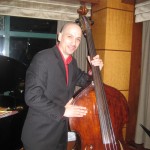 When I think of all the basses I’ve owned, I found every one of them on my own (or with my teacher early on) and took them to a luthier to ask them what they thought of the instrument. They would tell me what they thought of the craftsmanship, whether or not it was a good deal, and what they could or could not do with the sound.
When I think of all the basses I’ve owned, I found every one of them on my own (or with my teacher early on) and took them to a luthier to ask them what they thought of the instrument. They would tell me what they thought of the craftsmanship, whether or not it was a good deal, and what they could or could not do with the sound.
On the surface, that seems like the correct way to buy a bass. However, after my experience with the LaFaro Prescott, and subsequently having Barrie make a bass for me, I think it’s probably the wrong way to go about things.
Phil with Scott LaFaro’s bass. CD Release party for
RE: Person I Knew – A Tribute to Scott LaFaro.
Kitano, NYC, 2011
I now recommend to bassists to first find a luthier that they respect. When you have found someone, take the time to show that person what you play like. If you can, get that person out to a few of your gigs. Give them recordings. Play some of their basses at their shop for a while. Then, based on what they’re hearing in your playing, ask the luthier what can be done with your instrument, or have him suggest a bass that’s right for you. He may hand you an instrument that you don’t think will be right, but try it out. You may be surprised.
That, in a nutshell, this the relationship that I think you should be cultivating with a luthier. A personal relationship based on your playing rather than what needs to be fixed.
Both of us are friends of Barrie Kolstein, could you please talk us through your relationship with the shop and the importance of the work Barrie has done on your instruments over the years?
I’ve known of Barrie for years, though I didn’t visit his shop until a few years ago. He let me borrow one of his basses back in 1995 at the winter NAMN show in California. Even though he didn’t know me, and I was just getting out of college then, he treated me like a professional. When I moved to New York City, I always wanted to go out to his shop in Long Island, but for some reason I never got up the nerve to just drop by. I guess I was a little shy back then. It wasn’t until Helene LaFaro-Fernandez (Scott’s sister) brought us together for my LaFaro tribute recording that I really got to know him.
The first bass of mine he worked on was this very large bass made by a guy named J.B.Allen in 1842, who was an apprentice at the Prescott shop. It is remarkably similar to the LaFaro Precsott, but about twice as big! There’s a similar tone quality in common, but my Allen bass responds slower and doesn’t sing in the upper register like the LaFaro Prescott. I’ve had a few luthiers look at if over the years, and though they did great work, nothing really made much of a difference in those two areas. I had people do what they could to the bass, but I was resigned to living with, what I assumed, was the character of this kind of bass. It seemed that every Prescott bass I’ve ever played was a little slow and didn’t sing like I would have liked.
Then I played LaFaro’s Prescott. It had everything I’ve ever wanted in a bass, and a few things I didn’t realize I needed. On a hunch, while I had Scott’s bass out of Barrie’s shop, I left my big Allen with him to fool with for a week. When I got it back, I couldn’t believe the difference– it was much more responsive (the notes popped out quicker), and the upper register sang much better. It still wasn’t Scotty’s bass, but it was the biggest improvement I’ve ever head in that bass. When I asked Barrie about it and what he did, he modestly said “A new bridge and a few tonal adjustments.”
The following week I brought my other bass into him, which is an old German bass that used to belong to George Mraz. I was pretty happy with the way that bass sounded, but I was curious to see what Barrie could do with it. It was already pretty responsive, but it could have benefited from a little more power. Plus the upper register was a little “pluncky”. Once again, a week in Barrie’s shop turned it into a better bass. Still, I missed LaFaro’s bass. Luckily, Barrie was almost finished with a copy of it, which I bought as soon as it was finished!
You own one of the few Lafaro Prescott copies made by Barrie. Out of all of the possible instruments to buy, you chose this. Could you please explain why went for an instrument made by Barrie and this particular model?
Well, like I mentioned before, LaFaro’s bass changed my life. For the first time I had an instrument in my hands that completely moulded to my body and playing style. Every bass I’ve owned came to me in some way or another. I never set out looking for a bass based on what I needed. Both of my basses are really great instruments, but my playing has changed in ways that make those basses unsuitable if I expect to play what I’m currently hearing in my head.
I really wanted Scott’s bass, which isn’t for sale. Since I was thinking that Scott’s bass is so amazing because of the work the Kolstein shop does, I was excited when Barrie told me about the nearly completed copy. I knew, with out even playing it, that it was going to be the perfect bass for me. I was confident that, even though it was a new bass, he would be able to capture the essence of what I loved about the real deal. I wasn’t disappointed. My new bass is still breaking in, but it’s already turning people’s ears. Most importantly, he captured all of the playability of the original. As a friend of mine noted, it should sound amazing by the time I’m dead!
I was confident that I was going to love the bass, and I do. He was also nice enough to let me play it for a few months and experiment with a lot of adjustments to make sure I was happy. Heck, he even completely reset the neck for me, which really opened everything up.
The original, like the copy, is a ¾ size bass, with perfectly sloped shoulders that facilitate an easy run into the upper register. It has nearly the same volume and projection of my giant J.B. Allen bass, which suits my playing since I try not to use an amplifier if I can help it. When I do need amplification, I use a microphone, so I need a bass that can put out a solid sound. It has an incredible center of pitch, which helps me cut through the band. The upper register jumps out of the bass, and it sings/sustains beautifully. It’s almost as if the bass get louder the higher you play. Most importantly, all of the notes sound the same. You can play an F anywhere and it’s nearly impossible to tell what string you’re on. Add up everything I just mentioned, then consider that the tension of the strings is low (at any string height), and you’ll see how you can physically play anything that comes to mind, which of course showed me how much more I have to learn about playing music! The instrument completely got out of my way.
I sat back and thought about how, 1: I’ve never played a Prescott that was this responsive and amazing, and 2: The great work Barrie did on my instruments, and realized that there must be something about Barrie’s philosophy, which I’m guessing he learned from his dad, that works for my style of playing.
You have mentioned to me about the ‘Kolstein setup’ in the past. Could you perhaps explain a little more about what that is, and what makes it different from other setups?
That’s tricky. I have no idea what Barrie does, in terms of craftsmanship. Anybody can stand a sound post up, adjust the string height, plain the fingerboard, etc… But when Barrie does it, the bass seems to be more open. He recently restored Arvell Shaw’s giant old Prescott, which is nearly a twin of my Allen. When I played it, I couldn’t believe how good it sounded. I’ve never played a giant Prescott that was that responsive! If he hadn’t made the LaFaro copy for me, I would have had him completely restore my Allen. It wouldn’t have been as accessible in the upper register, due to the huge, wide shoulders, but I’m guessing everything else would probably have fallen in line– faster, singing upper register, easy to play…
I guess if I had to put a finger on what I consider to be the “Kolstein setup”, it would have three elements. The bass is easy to play (loose string tension), the upper register notes are loud and sustain easily (the singing thing I always mention), and the notes jump out of the bass quickly (you can play very fast and still hear every note clearly).
I don’t know that means in terms of setup. I’ll have to ask my luthier!
In questions to Barrie, I asked his thoughts on the importance of the work his father Samuel did to the Lafaro Prescott. Lafaro was making huge advances on the bass; a traditional setup of the time would perhaps not have facilitated Lafaro’s style of playing. I feel that Samuel’s work on the instrument may have contributed to the development of Lafaro’s playing. With all of your experience of Lafaro and Kosteins etc, what are your thoughts on this?
I’m sure Barrie will give you the details on what Sam did for Scotty, so I’ll leave that to him. Generally speaking, the break with tradition that Scott wanted Sam to work on was lowering the string height of the bass. At the time, if you wanted to be heard, you have to be able to get your finger under the strings to give them a good pull. I was skeptical about just how low Scott’s action could have been given how big of a sound he gets on the recordings. However, when I finally played the bass, I understood. That bass projects even with low strings! To me, that was the pioneering work that those two accomplished together. From what I understand, even Sam was a little doubtful that this was a good direction to go in, but he made it happen. There are a lot of bassists out there that don’t realize how important that kind of relationship is.
I never realized how much a bass could affect me. Even the copy that Barrie made for me has changed my playing and the affect it has on the people who hear me. I was playing a concert recently with the copy. A stranger came up to me afterwards and commented on how crystal clear every note of the bass was.
Most bassists are content with their role as a consummate time keeper, which I am completely on board with. Like LaFaro, however, I also like to push the envelope. I try to emulate tenor saxophonists when I solo, for instance. My new Kolstein bass is so clear, and the intonation is so precise, that when I solo horn players can identify with what I’m playing. There are a lot of amazing basses out there, but when you try to play fast intricate pizzicato passages, things can get fuzzy. Your solo lines can get muddled. Not with the bass Barrie made for me.
When I first played Scotty’s bass, I had a feeling that he came to the exact realization that I did. You can hear the transformation he went through when he got the bass. Listen to the way he was playing in 1958, then how he sounded in 1959. It’s amazing. All of a sudden, all of that stuff he was going for started to coalesce.
When the instrument gets out of your way, and you feel like you can play anything you want, you quickly realize that there is so much that you don’t know about music. I’m 100% sure that LaFaro had this same epiphany 53 years ago. All of a sudden, you can create the music that you’re hearing in your head. You’re not trapped by what kind of bass you are playing.
You were fortunate enough to be entrusted with the Prescott on a couple of occasions; surely this speaks of a highly developed relationship between you and your luthier Barrie. Do you and Barrie perhaps feel an obligation to keep the Lafaro legacy alive?
If I may speak for Barrie first, yes, he certainly does. When Helene LaFaro-Fernandez called him and asked him about the possibility of letting me use the bass, he was very happy and enthusiastic to have someone playing the bass. He’s thanked me more than a few times for helping to keep LaFaro’s legacy alive. The LaFaro legacy has a core of amazing fans that seem to have an unspoken mission to pay tribute to his amazing contribution to jazz. Barrie has gone out of his way to help me with my LaFaro projects. From what I understand, Sam Kolstein and Scott were very close. Sometimes I wonder if Barrie keeps Scott’s legacy alive out of respect for his father as well. Sam worked on everyone’s bass back in the day! There is a huge hidden history to the Kolstein shop. Rufus Reid and I were talking about the shop one time, and we thought it would be amazing to see how may famous recordings were played on basses that had been worked on by either Sam or Barrie.
As for my connection to LaFaro, the first two jazz records that I ever bought were the Bill Evans LPs Waltz for Debby and Sunday at the Village Vanguard. I immediately fell in love with the sounds on those recordings. For whatever reason, those recordings resonate with me. He’s probably the main reason why I prefer playing in piano trios. There is so much more freedom for the bass in a trio setting.
One time, when the writer Stanley Crouch was writing for Jazz Times, he wrote an article about the unsung heroes of jazz– the bass players. He proceeded to name all of the great bass players that he felt made major contributions to jazz bass playing. Jimmy Blanton, Ray Brown, Ron Carter, Buster Williams, to name a few he named. Then he threw in a sentence that said something like “But Scott LaFaro… I never understood that Scott LaFaro thing.” I felt compelled to write the editor. After I threw away my first five inflammatory responses, I finally crafted something that was to the point. They actually published my response.
I don’t know why I felt compelled to defend LaFaro’s legacy, but I did. Frankly, it pissed me off having a non-bass player telling me who made real contributions to jazz bass history.
LaFaro wasn’t trying to sound like anyone else. He followed his own path, his own idea of what the bass could be doing. Studying music is like peeling an onion. There are so many layers of understanding. I used to be obsessed with trying to play all of those notes Scotty played, but now I’m obsessed with WHY he played all of those notes. To me, that’s his biggest contribution to music. It’s the part of his legacy that I try to teach to the younger generation. Learn WHY he played like he did, take that concept, and then find your own voice on the instrument.
I will be forever grateful Helene and Barrie for allowing me to be involved with LaFaro’s legacy, to make my small contribution to the memory of one of my greatest heroes.









